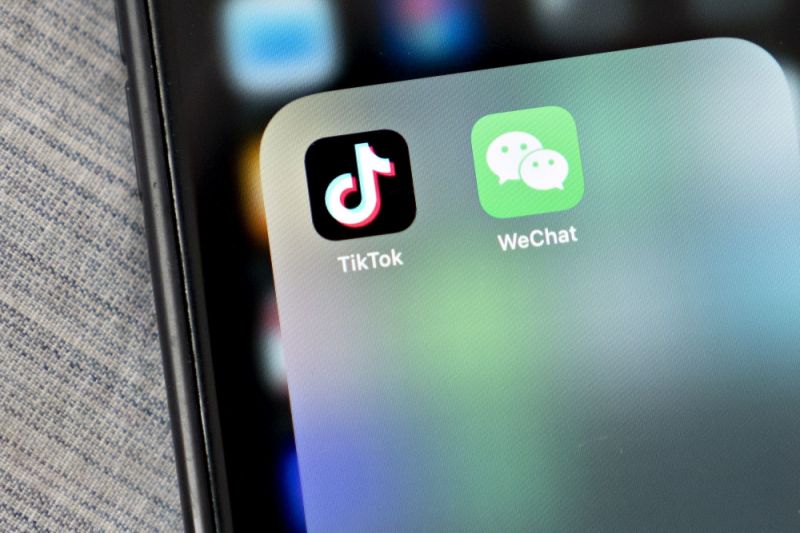
(Bloomberg Opinion) — The jockeying by Microsoft Corp. and possibly other U.S. companies to buy TikTok’s U.S. operations shines a harsh light on how domestic technology giants are falling behind on innovation in social media and other areas of opportunity.
Both ByteDance Ltd.’s TikTok and Tencent Holdings Ltd.’s WeChat are living on borrowed time in the U.S. after President Donald Trump signed executive orders last week effectively banning the apps after 45 days. The renewed focus brings to the forefront how badly American social media apps have lagged their Asian counterparts. Consider Twitter Inc., for example. Despite spending roughly $700 million a year in research and development, the microblogging company’s main offering has stayed virtually the same over the past decade. Amazingly, its biggest innovation may be doubling the character count for each tweet in 2017. That’s not an impressive return on large amounts of investment spending. Similarly, Facebook Inc.’s and Google’s platforms haven’t been much better. The core functionality of Instagram’s photo-sharing scrollable feed and YouTube’s video search interface hasn’t changed much over the past few years.
In contrast, TikTok has brought significant innovations to short-form videos. Its personalization algorithm surfaces the most-relevant entertaining content for its users, driving the app to be the most-downloaded in the world this year; it now reaches 100 million Americans. And while U.S. services languished, WeChat has also become a super-app, expanding from messaging to payment, shopping, gaming and many other features.
Nowhere is the gap more apparent than in the critical and attractive growth market of video games. Demand has soared as consumers turn to video games for in-home entertainment under shelter-in-place orders. According to the NPD Group, U.S. video-game sales rose 30% in the second quarter compared with those a year earlier. And the industry growth spurt may just be starting. Coming technology advances from cloud computing, semiconductors and gaming engines are positioning the industry to be on the cusp of a multiyear wave of innovation. Research firm Newzoo projects the gaming market will grow from roughly $160 billion this year to nearly $200 billion by 2023.
And the impressive growth in video games may be more sustainable because they are becoming the social networks of the future. Last week, Activision Blizzard Inc. CEO Bobby Kotick talked about this important trend on a call with investors: “Games provide social interactions that connect people more deeply than any other form of entertainment,” he said. “We expect that as new players engage and form in-game connections with existing or new friends, many of them will stay engaged for the long term, and we see this as a really big opportunity.”
To take advantage of the next level of growth, Chinese and Japanese companies have prudently invested in some of the industry’s best assets around the world. Tencent now owns stakes in the preeminent mobile games leader Supercell, Los Angeles-based Riot Games — the maker of the tremendously successful “League of Legends” PC game, which has tens of millions of players — and Fortnite-developer Epic Games Inc. Last month, Sony Corp. also made a strategic investment in Epic, citing collaboration benefits of the studio’s industry-leading Unreal game engine, which powers many of industry’s best multiplayer game experiences.
While Asian companies have made smart moves, American companies aren’t doing so well. For example, in May Amazon.com Inc. introduced its first big-budget game, “Crucible,” only to pull it from the market just weeks later after it failed to gain traction with players. Likewise, Google’s cloud-gaming service Stadia and Apple Inc.’s Arcade subscription service haven’t taken off with consumers. Further, the initial feedback from the gaming community points to another victory for Sony over Microsoft in the coming next-generation console war. In a stunning development, Microsoft announced on Tuesday that its critical anchor game “Halo Infinite” would be delayed to next year because of development issues, further complicating the company’s fall hardware launch. As a result, Sony now has a clear advantage with its lineup of exclusive games. To be sure, Big Tech’s core business franchises are still thriving financially. Last month, the companies all posted better-than-expected financial results for their latest reported quarters, demonstrating their ability to generate tens of billions of dollars in profits even amid a pandemic. But the technology industry’s history is littered with examples from Yahoo to Blackberry in which dominance in one era can disappear suddenly in the next. The key signal before the declines is lackluster innovation. With the rise of Chinese internet apps and Big Tech’s inability to invest properly in gaming, cracks are appearing in some of Silicon Valley’s giants.
This column does not necessarily reflect the opinion of the editorial board or Bloomberg LP and its owners.
Tae Kim is a Bloomberg Opinion columnist covering technology. He previously covered technology for Barron’s, following an earlier career as an equity analyst.
<p class="canvas-atom canvas-text Mb(1.0em) Mb(0)–sm Mt(0.8em)–sm" type="text" content="For more articles like this, please visit us at bloomberg.com/opinion” data-reactid=”41″>For more articles like this, please visit us at bloomberg.com/opinion
<p class="canvas-atom canvas-text Mb(1.0em) Mb(0)–sm Mt(0.8em)–sm" type="text" content="Subscribe now to stay ahead with the most trusted business news source.” data-reactid=”42″>Subscribe now to stay ahead with the most trusted business news source.
©2020 Bloomberg L.P.






